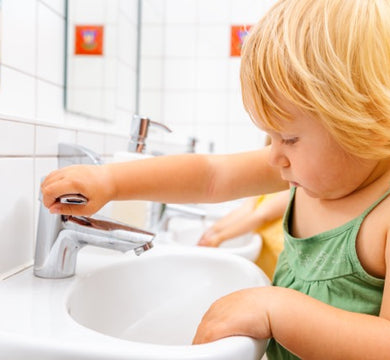Biofilm Formations Present Serious Legionella Risk for Buildings Looking to Reopen
Several key organizations focused on public health and the control of Legionnaires’ disease, such as Centers for Disease Control and Prevention, The Health and Safety Authority, The Legionella Control Association and European Society Of Clinical Microbiology and Infectious Diseases Study Group For Infectious Diseases, have released recommendations advising building owners and duty holders to carry out necessary remedial work before reopening buildings to reduce Legionnaires’ disease risk. They have also recommended that the effectiveness of such remedial work should be assessed with Legionella testing.
In the UK, and across the world, the most traditional and commonly used method for Legionella testing is the laboratory culture method. In most cases, a sample of water is taken from the system or risk area which the duty holder or water management professional would like to test, and it is sent to the lab for further analysis.
What is interesting about the prevalence of lab-based water testing is that it doesn’t look for Legionella bacteria where it is most prevalent. A very small percentage of Legionella hiding in water systems is thought to be found in the system’s water. It has been estimated that only 10% of Legionella bacteria can be found in free-flowing water within water systems. The other 90% is found within sessile communities on the inner surfaces of pipework and other wet surfaces, which we call biofilm.
Biofilm is both a coating and grouping of organisms made up of bacteria, protozoa and algae. This slime-like layer protects micro-organisms from disinfection and biocides by providing nutrients and a physical barrier from treatments. As a result, it helps pathogens like Legionella to proliferate.
Prolonged periods of system stagnation, as we have seen in lockdown during the COVID-19 pandemic, can lead to dense biofilm formations. If left untreated, small pieces may break away under water system flow, potentially infecting or re-infecting other parts of the system, clogging filters and creating problematic infections in dead legs.
Recent research suggests that biofilm can even affect Legionella’s virulence (its ability to infect amoeba or human lung cells). Worryingly, studies indicate that Legionella which originate from biofilm can avoid immune responses in human macrophages in the lungs thus allowing for more successful infectivity. It seems that Legionella that has long been resident in biofilm can be much more deadly.
As a result of these studies, we know that Legionella, if infecting a system, is likely to be most easily detected in biofilm. Furthermore, the Legionella in the biofilm is more dangerous to human health. It would therefore seem prudent for risk-focused water management professionals to consider initiating biofilm testing (or adding more biofilm testing) to their current water quality protocols.
The Hydrosense Legionella Swab Test Kit is a targeted solution which helps duty holders and other water management professionals to detect the strain of Legionella which is responsible for almost all cases of Legionnaires’ disease and outbreaks to date (Legionella pneumophila serogroup 1) in the areas where they are most likely to multiply and benefit from the protective qualities of biofilm.
The simple test provides accurate results in only 25 minutes (as opposed to 10-14 days with lab culture), significantly reducing recommissioning checks and allowing businesses to get back to 'business as usual' quickly, and safely. Multiple flushes or disinfections following lockdown are likely to be required in some installations. Hydrosense can allow you to detect a problem and begin another flush or disinfect immediately rather than waiting 2 weeks for a lab culture test. Many Hydrosense customers are already benefitting from this ability of Hydrosense to accelerate recommissioning.
High risk areas for biofilm formation and Legionella risk
- Cooling Tower Spray Bar
- Which is used to cool water by creating water droplets. Is prone to biofilm build up and should be monitored in accordance with legislation.
- Cooling Tower Sump
- Which has been described as a swimming pool for bacteria by water management experts. In cooling towers sumps, nutrients, scale, corrosion and biofilm can form on the usually metal surfaces and lead to high Legionella risk. This system part is usually found at the end of the cooling process so biocide and inhibitor residuals could be low due to being used up earlier in the process. Further, biocide and inhibitor are usually only topped up once water leaves the sump. Cooling tower sumps should be monitored in accordance to legislation.
- Cooling Tower Packing
- Used to help cool down water which is showered down by the spray bar, heavy scale and biofilm build up can occur. Should be monitored in accordance to legislation.
- Plate Heat Exchangers
- Where heat transfer occurs. There is potential for corrosion, scale and biofilm build up. Water is usually the optimum temperature for bacterial growth.
- Co-extrusion Systems
- Which use water to spray products, keeping them cool during the manufacturing process. This system recycles water which is usually stored in storage tanks and where rapid biofilm growth can occur due to nutrients created by the manufacturing process. Water vapour can be created by the spray nozzle.
- Water Tanks
- Stagnation and the presence of nutrients can contribute to the formation of biofilm and bacteria, like Legionella.
- Showers
- Swabbing in the showerhead or hose is a useful way to check for Legionella in shower biofilm.
- Outlets
- TMV Mixer taps and other outlets are a major risk if they have seen low use for a prolonged period.
Others high risk areas which can be testing with the Hydrosense Legionella Swab Test Kit include any low flow systems, hoses, sprinkler systems, vehicle washes.
Article: https://blog-hydrosense--legionella-com.cdn.ampproject.org/c/s/blog.hydrosense-legionella.com/biofilm-formations-present-serious-legionella-risk-for-buildings-looking-to-reopen?hs_amp=true


